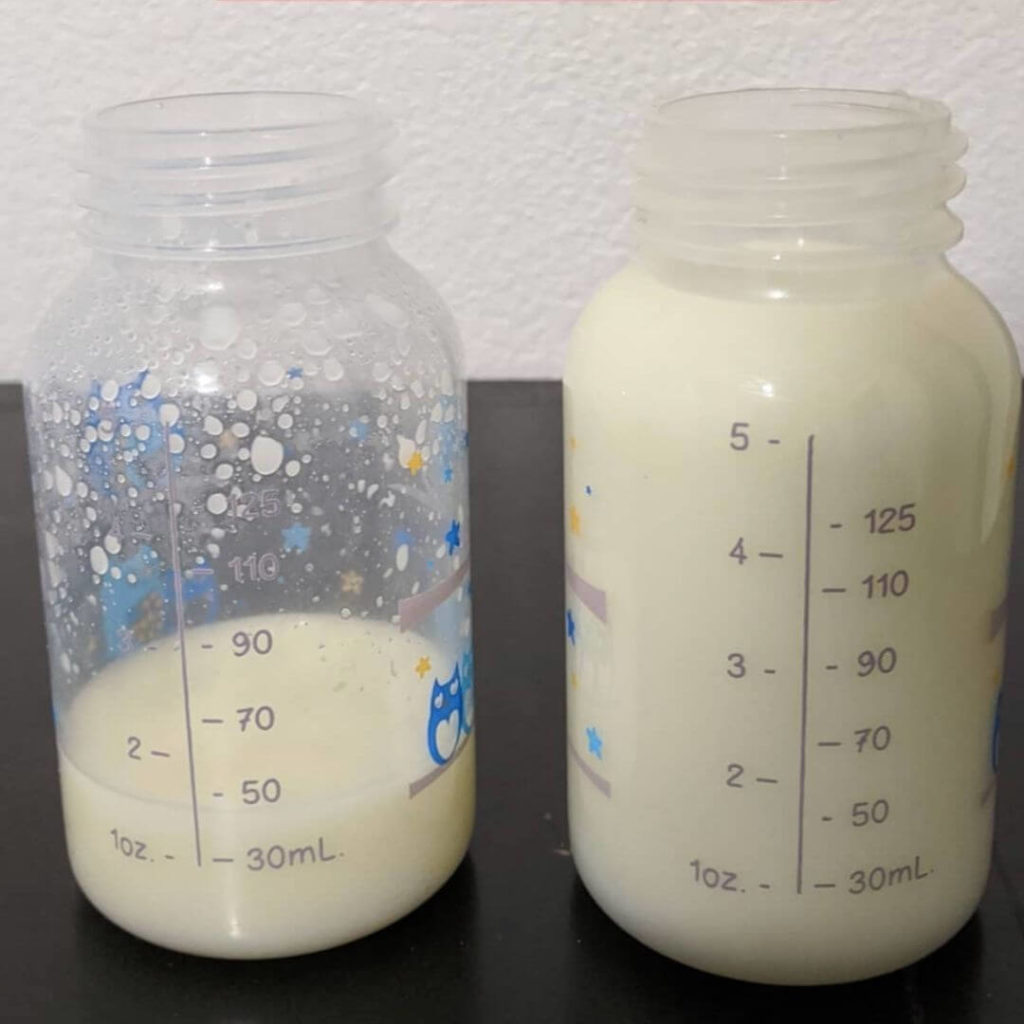Updated By Chelsea Sablotsky, CLC March 2021
As a new mom, breastfeeding comes with its challenges. You might wonder if you’re producing enough milk for your baby. Milk production will start a few days after you give birth. A hormone called prolactin signals your body to begin to produce milk. As you continue to feed your baby, your body will adjust to an amount suitable for them. Low milk supply is the most reported reason for decreasing or stopping breastfeeding early.
In the US, data reveals that an increasing number of mothers are initiating breastfeeding. Many believe they cannot meet the recommendations for solely breastfeeding. The highest rate of drop-off occurs during the first weeks after birth.
Remove Milk Immediately
Once milk production begins, it is essential to remove milk from the breasts. Start pumping within 6 hours of your baby’s birth if your baby does not nurse right away. Your breasts will begin to curb milk supply within several days if milk is not removed.
Between 6 weeks to 3 months after giving birth, your breasts may feel less full, leaking may lessen or stop, and pumping output may decrease. These are normal changes and do not mean that the milk supply has actually decreased. Many moms will see an increase in milk production as late as 9-15 weeks after birth with regular pumping.
Reasons For Low Supply
The reasons for low breast milk supply vary. Many will delay nursing under the presumption that breasts need time to refill. This may cause production to slow. Milk contains a whey protein called Feedback Inhibitor of Lactation (FIL), which will stall milk synthesis when the breast is full. Milk production speeds up when the breast is emptier, and there is less FIL.
There are also prolactin receptor sites within the breast. They enable prolactin in the bloodstream to stimulate the synthesis of breastmilk. When the breast is full, prolactin cannot enter through the receptor sites, and the rate of milk synthesis will decrease. Frequent milk removal in the early weeks following giving birth will increase milk production.
Your body produces milk at all times, and between feedings, it collects in your breasts. When there are extended periods between feeding or pumping, more milk collects. The amount of milk that can be stored in the breast between feedings varies significantly.
The storage capacity of the breast also affects milk production. This differs from mom to mom and is not related to breast size. A larger storage capacity allows you to go longer between feedings without impacting your milk supply. A smaller storage capacity means your breasts will become full quickly, which can slow production faster. If you have a smaller storage capacity, you will need to nurse or pump more often to keep the milk flowing.
Scheduled feedings can also conflict with the supply of milk and can lead to a decrease in production down the line. Ending a feeding before your baby stops can impede the supply-demand cycle.
Conclusion
To speed up and increase daily milk production, you need to remove milk from the breast frequently. Keep your breasts as empty as possible throughout the day by adding pumping sessions between nursing sessions. Empty the breasts as thoroughly as possible at each nursing and pumping session. To ensure you’re emptying your breasts, make sure your baby is nursing properly and use breast massage and compression.
If you’re looking for additional tips to try, check out the list below! Make sure to comment and let us know if any of them work for you, or if you have another tip to share!
10 Tips to Increase Milk Supply
- Nipple stimulation prior to pumping/nursing.
- Add hand expression before, during and after pumping/nursing.
- Guided imagery – listen to an audio recording of a progressive relaxation, while imagining the ocean or a waterfall of milk.
- Watch a cute video of your baby while you’re pumping (or a video of them crying).
- Pump both breasts at once.
- Power Pumping: Rather than pumping for 15 minutes straight, pump for a few minutes, stop for a few minutes, and repeat.
- Ensure the pump is working and assembled properly.
- Ensure proper size flange – some helpful links to determine your flange size:
- Try a pump flange with a different shape. Since the ducts are right behind the nipple, some flanges decrease the milk flow the same way a baby with a clenched mouth can.
- Experiment with a different pump. Some pumps use more compression and less vacuum.
RESOURCES
Maternal Perceptions of Insufficient Milk Supply in Breastfeeding: https://www.ncbi.nlm.nih.gov/pmc/articles/PMC4508856/
Frequently Asked Questions about Milk Production: https://kellymom.com/bf/got-milk/basics/milkproduction-faq/
Establishing and maintaining milk supply when baby is not breastfeeding
https://kellymom.com/ages/newborn/nb-challenges/maintainsupply-pump/
Establishing and maintaining milk supply when baby is not breastfeeding https://kellymom.com/ages/newborn/nb-challenges/maintainsupply-pump/
How does milk production work? https://kellymom.com/hot-topics/milkproduction/
Increasing Low Milk Supply: https://kellymom.com/hot-topics/low-supply/
Pocket Guide for Lactation Management – Karin Cadwell, Cindy Turner-Maffei
Find out your breastshield size with the Pumpables ruler https://pumpables.co/pages/measure
How to Get the Right Breast Shield/Flange Size For You
https://www.nebmedical.com/how-to-get-the-right-breast-shield-flange-size-for-you/




